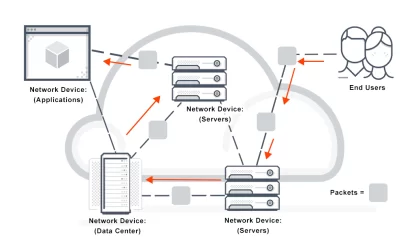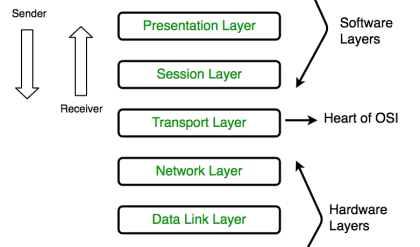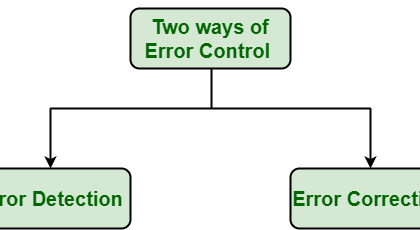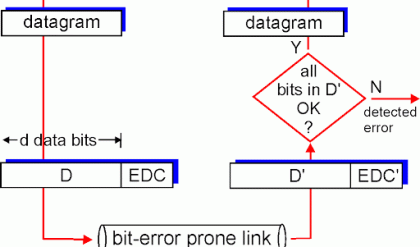To transport electrical signals, a transmission medium is required. There are four types of transmission media:
1. Wire pair
2. Coaxial cable
3. Fiber-optic cable
4. Radio
Wire Pair
As one might imagine, a wire pair consists of two wires. The wires commonly use a copper conductor, although aluminum conductors have been employed. A basic impairment of wire pair is loss. Loss is synonymous with attenuation. Loss can be defined as the dissipation of signal strength as a signal travels along a wire pair, or any other transmission medium for that matter. Loss or attenuation is usually expressed in decibels (dB). In Appendix C the reader will find a tutorial on decibels and their applications in telecommunications.
Loss causes the signal power to be dissipated as a signal passes along a wire pair. Power is expressed in watts. For this application, the use of milliwatts may be more practical. If we denominate loss with the notation LdB, then

where P1 is the power of the signal where it enters the wire pair, and P2 is the power level of the signal at the distant end of the wire pair. This is the traditional formula defining the decibel in the power domain.
Example 1. Suppose a 10-mW (milliwatt), 1000-Hz signal is launched into a wire pair. At the distant end of the wire pair the signal is measured at 0.2 mW. What is the loss in decibels on the line for this signal?

All logarithms used in this text are to the base 10. Appendix B provides a review of logarithms and their applications.
The opposite of loss is gain. An attenuator is a device placed in a circuit to purposely cause loss. An amplifier does just the reverse; that is, it gives a signal gain. An amplifier increases a signal’s intensity. We will use the following graphic symbol for an attenuator:

Wire-pair transmission suffers other impairments besides loss. One of these impairments is crosstalk. Most of us have heard crosstalk on our telephone line. It appears as another, “foreign” conversation having nothing to do with our telephone call. One basic cause of crosstalk is from other wire pairs sharing the same cable as our line. These other conversations are electrically induced into our line. To mitigate this impairment, physical twists are placed on each wire pair in the cable. Generally there are 2 to 12 twists per foot of wire pair. From this we get the term twisted pair. The following figure shows a section of twisted pair:

Another impairment causes a form of delay distortion on the line, which is cumulative and varies directly with the length of the line as well as with the construction of the wire itself. It has little effect on voice transmission, but can place definition restrictions on data rate for digital/data transmission on the pair. The impairment is due to the capacitance between one wire and the other of the pair, between each wire and ground, and between each wire and the shield, if a shield is employed.
Capacitance
Direct-current (DC) circuits are affected by resistance, whereas alternating-current (AC) circuits, besides resistance, are affected by the properties of inductance and capacitance. In this subsection, we provide a brief description of capacitance. Also see Appendix A, Section A.8.
Capacitance is somewhat analogous to elasticity. While a storage battery stores electricity as another form of energy (i.e., chemical energy), a capacitor stores electricity in its natural state. An analogy of capacitance is a closed tank filled with compressed air. The quantity of air, since air is elastic, depends upon the pressure as well as the size or capacity of the tank. If a capacitor4 is connected to a direct source of voltage through a switch, as shown in Figure 2.10, and the switch is suddenly closed, there will be a rush of current in the circuit. This current will charge the capacitor to the same voltage value as the battery, but the current will decrease rapidly and become zero when the capacitor is fully charged.
Let us define a capacitor as two conductors separated by an insulator. A conductor conducts electricity. Certain conductors conduct electricity better than others. Platinum and gold are very excellent conductors, but very expensive. Copper does not conduct electricity as well as gold and platinum, but is much more cost-effective. An insulator carries out the opposite function of a conductor. It tends to prevent the flow of electricity through it. Some insulators are better than others regarding the conduction of electricity. Air is an excellent insulator. However, we well know that air can pass electricity if the voltage is very high. Consider lightning, for example. Other examples of insulators are bakelite, celluloid, fiber, formica, glass, lucite, mica, paper, rubber, and wood.

The insulated conductors of every circuit, such as our wire pair, have to a greater or lesser degree this property of capacitance. The capacitance of two parallel open wires or a pair of cable conductors of any considerable length is appreciable in practice.
Bandwidth (Hz) of a Twisted Pair.
The usable bandwidth of twisted wire pair varies with the type of wire pair used and its length. Ordinary wire pair used in the PSTN subscriber access plant can support 2 MHz over about 1 mile of length. Special Category 5 twisted pair displays a 67-dB loss at 100 MHz over a length of 1000 ft.
Bandwidth Defined.
The IEEE defines bandwidth as “the range of frequencies within which performance, with respect to some characteristic, falls within specific limits.” One such limit is the amplitude of a signal within the band. Here it is commonly defined at the points where the response is 3 dB below the reference value. This 3-dB power bandwidth definition is illustrated graphically in Figure 2.11.






Comments are closed.